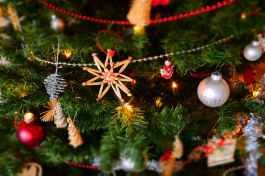Friluftsliv, what does it mean? Friluftsliv, is a Swedish word which literally means free-airlife and generally refers to outdoor education and nature tourism. How do you experience free-airlife in an urban regional park open to the general public? How would you identify your outdoor experience?
The 6th International Conference on Monitoring and Management of Visitors in Recreational and Protected Areas ( MMV ) examined many co-existing and dispartate segments for greenspaces. The gamut ranged from the value of outdoor activities, the outdoor nature experience, health and wellness in nature, the visitor experience, recreational values, the carrying capacity of greenspaces, user and visitor monitoring, the impact of tourism, nature educational perspectives, protected areas, user behavior, management strategies, conservation, and sustainable development, children, conflicts, risk and safety, assessments and research.
How does an urban consumptive culture weigh in alongside intangible heritage assets. Is it feasible to acknowledge natural, man-made and spiritual heritage assets and their values? What is the same about heritage management, and nature conservation when it comes to interpreting value of place? What is the difference between assessment measures and the process implemented to rate the importance and value of features, and place identity? Should communities strive to identify resources, and to the identity of place of biodiversity in the grand scheme? What idealogy, and framework is used to ascertain the significance of the built and natural features, assets, and the total user package?
It is all a balancing act, a dance between the context and monitoring or experiences, attitudes, in the dynamic rhythm of time and space. It is the vulnerability of the semi-wilderness habitat amid the exponential increase of the anthropogenic footprint. Its the indicator of the natural capital asset valuation system contrasting and comparing native environments with cultural heritage.
Users, and site visitors come to the afforestation area with a wide variety of experience needs, wishes and demands all placed on the environment.
Natural features with important physical and biological formations
Geological and physiographical formations
Aesthetic resources: landscapes, forests, wetlands etc
Indigenous species
· Animals
· plants
· Non-living organisms
Exotic species creating the built heritage landscape
· Animals
· plants
· Non-living organisms
Systems of scientific importance
Conservation of natural beauty
Biodiversity
Geomorphological Diversity
Geological Diversity
Distinctive Ecosystems
Genetic Diversity
Indigenous Species
Natural Integrity
Ecosystems
Formations and Processes of Ecosystems
Evolution and Succession Processes
Typology
SHAPED NATURAL ENVIRONMENT
Parks and Gardens
Sacred Natural Wetlands Sites
Underwater Cultural Heritage
Humans in Nature
Outdoor Centres
Activity Centres
BUILT ENVIRONMENT
Trails
SW OLRA
Utilities
ARCHAEOLOGICAL SITES AND MEMES
Archaeological Sites
Pleistocene Glacial Spillway
PLACES OF MEMORY
Old Bone Trail
Settlers and homesteaders
Biographies of namesakes
West Swale
(Chart adapted from Papathansiou-Zuhrt (2012))
Bibliography
Fredman, Peter, Marie Stenseke, Hanna LIljendahl, Anders Mossing and Daniel Laven. eds (2012) The 6th International Conference on Monitoring and Management of Visitors in Recreational and Protected Areas. (MMV) Outdoor Recreation in Change – Current Knowledge and Future Challenges. Stockholm, Sweden.
Papathansiou-Zuhrt, Dorothea. (2012) See TCP Sagittarius. Golden Bow: Teaching Modules. Development of Transnational Synergies for Sustainable Growth Areas. Updated Version 2012.
For directions as to how to drive to “George Genereux” Urban Regional Park
For directions on how to drive to Richard St. Barbe Baker Afforestation Area
For more information:
NEW P4G District Official Community Plan
Richard St. Barbe Baker Afforestation Area is located in Saskatoon, Saskatchewan, Canada north of Cedar Villa Road, within city limits, in the furthest south west area of the city. 52° 06′ 106° 45′
Addresses:
Part SE 23-36-6 – Afforestation Area – 241 Township Road 362-A
Part SE 23-36-6 – SW Off-Leash Recreation Area (Richard St. Barbe Baker Afforestation Area ) – 355 Township Road 362-A
S ½ 22-36-6 Richard St. Barbe Baker Afforestation Area (West of SW OLRA) – 467 Township Road 362-A
NE 21-36-6 “George Genereux” Afforestation Area – 133 Range Road 3063
Wikimapia Map: type in Richard St. Barbe Baker Afforestation Area
Google Maps South West Off Leash area location pin at parking lot
Web page: https://stbarbebaker.wordpress.com
Where is the Richard St. Barbe Baker Afforestation Area? with map
Where is the George Genereux Urban Regional Park (Afforestation Area)?with map
Blogger: FriendsAfforestation
Tumblr friendsafforestation.tumblr.comFacebook Group Page: Users of the George Genereux Urban Regional Park
Facebook: StBarbeBaker Afforestation Area
Facebook for the non profit Charity Friends of the Saskatoon Afforestation Areas Inc. FriendsAreas
Facebook group page : Users of the St Barbe Baker Afforestation Area
Twitter: St Barbe Baker Charity Twitter:FriendsAreas
Please help protect / enhance your afforestation areas, please contact the Friends of the Saskatoon Afforestation Areas Inc. (e-mail / e-transfers )Support the afforestation areas with your donation or membership ($20.00/year). Please donate by paypal using the e-mail friendsafforestation AT gmail.com, or by using e-transfers Please and thank you! Your donation and membership is greatly appreciated. Members e-mail your contact information to be kept up to date! Canada Helps
United Nations Decade on Ecosystem Restoration
- Use the UN Decade’s Visual Identity
- Make it your own
- Spread the word about the UN Decade
- Let’s Bring Back Forests
- Let’s Green Our Cities
““Be like a tree in pursuit of your cause. Stand firm, grip hard, thrust upward. Bend to the winds of heaven..”
Richard St. Barbe Baker










